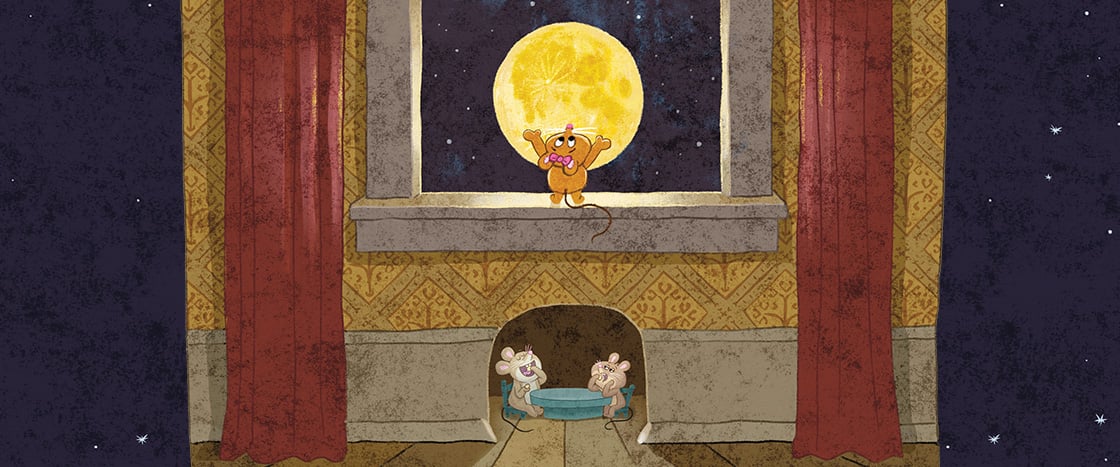Milly the mouse longed for an adventure. The other mice never did anything. They just ate crumbs from the kitchen. Then they talked about crumbs.
“I want something more,” she said one night. Then she looked out the window.
“That’s it!” she said.

Milly the mouse longed for an adventure. The other mice never did anything. They just ate crumbs from the kitchen. Then they talked about crumbs.
“I want something more,” she said one night. Then she looked out the window.
“That’s it!” she said.
“I’m going to that big ball of cheese in the sky. The moon!”
Every mouse knows that the moon is made of cheese. They can tell by the way it looks.
Milly borrowed a spacesuit from the kids’ room. Then she set off.
And she got to the rocket just in time.
The door closed. The rocket began to shake.
3, 2, 1, BLAST OFF!
Milly held on tight with her little claws. Yow!
The rocket sped into the sky. Milly’s little mouse body was pressed to the seat.
“Must. Hold. On,” said Milly. “Must. Get. That. Cheese.”
Now they were in space. They were all floating. Whee!
But wait. The astronaut food was floating too. Milly could not catch a crumb to eat!
Milly was hungry. Her belly growled. Would they get to the moon before she starved?
At last, they landed. Phew!
“Here I am, moon!” Milly shouted. But when she looked down, the ground was dusty.
“What kind of moldy old cheese is this?” she said.
Milly kicked at the ground. “This big ball isn’t cheese at all! It is just dust and rocks.”
Milly was glad when it was time to go. She was done with moon dust. And she was still hungry.
Back home, Milly had plenty of crumbs to eat.
“Tell us again about the moon,” said the other mice.
“OK, OK,” said Milly.
But pretty soon, Milly got tired of telling the same story. So she looked out the window and saw a ship go by.
“Pirate gold!” she said. “Think of all the the cheese I could buy with that!”
About the Story
English Language Arts Focus
Elements of a story
The essential question of this issue is Why do we go on adventures? The articles below connect to this theme.
Through the above genres, students will discuss:
Read-Aloud
Small Group Guided Reading
1. BEFORE READING
Show Video (10 minutes)
Preview the Title and Set a Purpose for Reading (5-10 minutes)
2. READ THE STORY (10-20 MINUTES)
ELA Focus: Prediction/Inference (10-15 minutes)
ELA Focus: Key Details (10 minutes)
ELA Focus: Narrative Writing (30 minutes)
ELA Focus: Retelling (10 minutes)